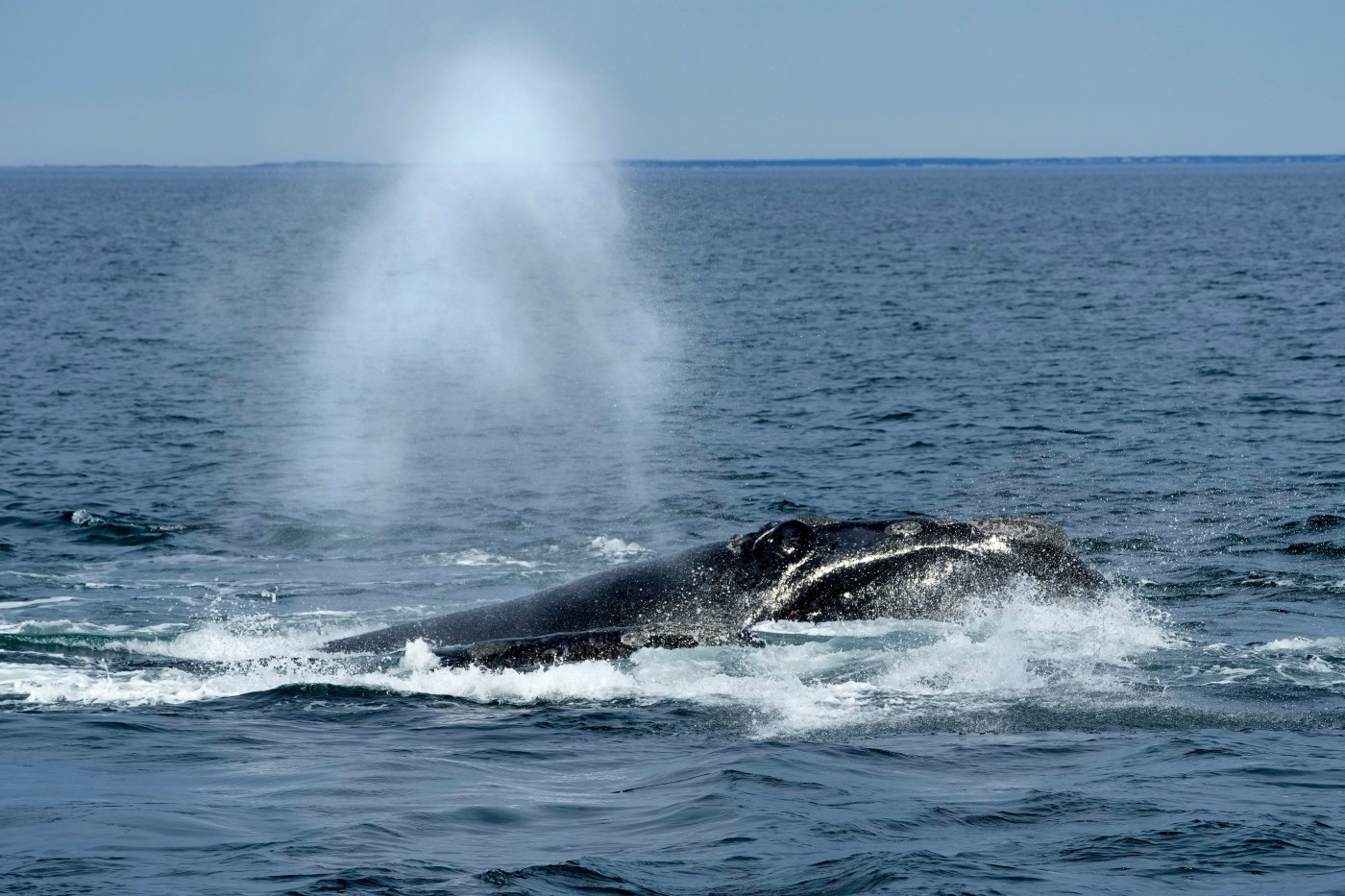
Redfern: Vessels must hit the brakes, not right whales
Massachusetts marks its second annual Right Whale Day on April 24. This day is an opportunity to educate the public about the plight of this critically endangered species — the state’s official marine mammal, of which less than 360 remain — and to highlight the research and conservation work happening to protect these animals. This day comes as the situation facing North Atlantic right whales in U.S. waters is particularly dire.
The heartbreaking irony for North Atlantic right whales was highlighted when the first sighting of a healthy right whale calf and its mother in Cape Cod Bay occurred in the same week that another new right whale mother was reported dead off Virginia’s coast. The mother, known as Catalog #1950, suffered catastrophic and gruesome injuries that were later confirmed to be caused by a vessel strike that completely dislocated her spine and fractured all vertebrae in her lower back. She also leaves behind her sixth calf, which is expected to die without its mother’s care.
This marks the third right whale death from a vessel strike this year, and we should not accept this as inevitable. There is a viable solution that could go far in protecting right whales.
The National Oceanic and Atmospheric Administration (NOAA) has proposed modifications to the existing federal vessel speed rule, including expanding time periods and size of seasonal speed zones; extending speed restrictions to include most vessels measuring over 35 feet; and implementing mandatory, instead of voluntary, restrictions in dynamic speed zones, which are established when and where right whales are observed and are likely to remain.
The New England Aquarium is steadfast in its call for the federal government to issue the revised vessel speed rule, which has been the subject of extensive review by various government agencies over the past 18 months. The delay of these protective measures has put this critically endangered species at continued risk. To increase the species’ chance of survival, speed restrictions need to be implemented immediately.
Vessel strikes are not the only risk these vulnerable whales face as they swim along the East Coast, heading north from calving grounds in Florida and Georgia to the Canadian Maritimes where many spend the summer months. Fishing gear entanglements have affected more than 85% of North Atlantic right whales, ensnaring their tails, mouths, and flippers and impeding their ability to eat, breed, and live long lives. One whale died in February due to entanglement, and just last week, an entangled right whale was spotted 50 miles off Block Island, R.I., with rope coming out of both sides of its mouth. The work being done by state and federal agencies, industries, and other partners to increase the use of ropeless fishing gear and fishing lines that snap more readily when whales encounter them is promising and deserves further study. These emerging methods will save whale lives.
On this Right Whale Day, let’s celebrate this iconic species and the births of 19 calves this year. With every birth, there is hope for their survival. But as we celebrate, we ask that you join us in calling for action to reduce the two main threats they face — vessel strikes and entanglements — before it is too late.
Dr. Jessica Redfern, PhD, is Associate Vice President of Ocean Conservation in the Anderson Cabot Center for Ocean Life at the New England Aquarium.


